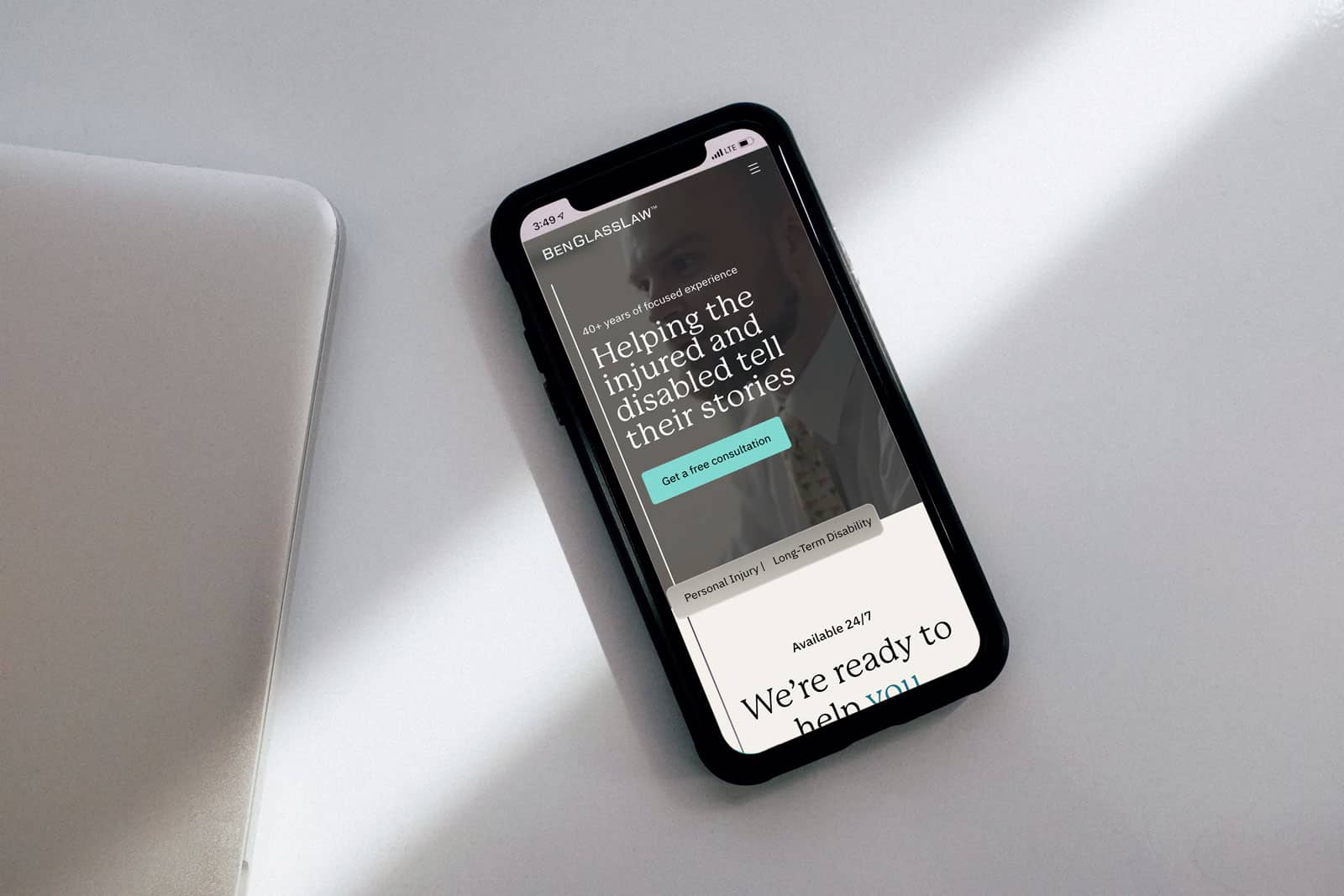Get the Best Provider and Best Price for Each Marketing Service
Distributing your marketing efforts across providers seems appealing at first. Maybe one agency has the best price for web development, while another has the best content marketing services. By shopping around, you can get the best deal and the best services!
Unfortunately, digital marketing doesn’t really work that way. The hidden costs and risks of hiring multiple vendors complicate every part of your marketing strategy:
- Planning
- Processes
- Timelines
- Project Management
- Communications
- Analytics
All these complications mean higher costs across the board, not to mention less effective results.
At LaFleur, we routinely work with agencies, internal marketing teams, and other providers. Below, we’ll discuss some of the most common problems with multi-vendor marketing and their solutions.
Problem #1: Important Steps and Functionality Get Missed During Planning
Two major problems arise during planning with multiple vendors:
- Important responsibilities are not estimated or delegated with clarity
- Crucial functionality is not implemented for your marketing plan
Typically, these issues stem from a lack of common definitions for services and a lack of clarity when defining the scope of a project.
Here’s an example. During discovery sessions with a vendor, you will likely introduce the idea of dividing up services among providers. For a web build, you may ask one vendor to handle the development while you talk to another agency about creating the content for your site.
These two major projects overlap in significant ways, and hopefully both vendors are savvy enough to help you understand exactly what is in their scope of work. Will the developer post the content on the pages? Will the content creators provide images or other design assets? Will the developers provide detailed content guidelines (character counts, formatting, structure, sizes, etc.) to align with their design? Will the content creators be responsible for writing meta data, navigation labels, menu copy, form fields, and image alt text? How will unexpected needs for content, design, or development be handled?
To the chagrin of many clients, most of these questions go unanswered until work actually begins. That means multiple vendors are building duplicate costs into their proposals, which means you’re paying more for less.
Even worse, they might underestimate the work involved and lowball their estimate; that means you’ll end up going over budget (usually significantly) or the project will flatline when all your vendors hit the black hole that none of them quoted in their scope of work for you.
The Solution? Increase Transparency Across the Board
Keeping vendors siloed is a recipe for utter disaster. If you are working with quality vendors, they will be able to give you more accurate estimates and save you money (and headaches) by working closely together. Here are a few tips for success:
- Invite all vendors to scoping, planning, and check-in meetings.
- Find a common communications platform. Email is fine, but a project management tool like Asana is better.
- Designate one final decision-maker for your team as well as each vendor.
Regardless of how transparent everyone is during the planning process, other issues can arise. A vendor may disagree with an approach you and another vendor are moving forward with. Unexpected issues will emerge that need to be worked out between vendors in order to move forward. Personality clashes may make working together difficult for vendors.
The more transparency you have at the outset of a project, the less trouble you will encounter moving forward. But utilizing multiple vendors still presents unavoidable challenges as work progresses.
Problem #2: Processes Become More Complex and Timelines Sprawl
Just like trying to get together with your friends or family, the more people who get involved in a project, the more difficult it becomes to find common availability, agree on decisions, and get things done. In particular, processes increase in complexity, and that leads to longer timelines.
Imagine a straightforward project: creating a dedicated landing page on your website for a marketing campaign. You immediately have a conflict to resolve: should content or page design take priority? If it’s design, the copywriters need to know the final space requirements before they can get started, and they may need to compromise on quality to fit those requirements. If it’s content, the designer will need the final approved content before they can make any meaningful progress.
Working with multiple vendors also means more work for you, the client. You’ll need to review work at every stage and approve moving forward. These limiting steps extend the overall timeline of the project because there are more milestones, and vendors can’t proceed until those milestones are officially cleared.
An in-house team can dynamically update multiple facets of a project efficiently while requiring fewer approvals. From my desk right now, I can literally see the web designer I work with most often. If I’m writing copy for a dedicated landing page, I can ask him if it will fit in the design or what the landscape of the page is like. I can push back on design options that will compromise the messaging. He can ask me to add, condense, or remove content to accommodate crucial design features.
The end result is a faster turnaround, a higher quality product, and less review time for the client. These efficiencies are simply not possible with multi-vendor teams. With significant difficulty, you may be able to achieve more efficiency, but a multi-vendor approach will never match a unified team’s performance.
RELATED ARTICLE: 10 Essential Best Practices for Creating Dedicated Landing Pages That Convert
The Solution? Find a Great Communications Platform and Designate Point People
You can reduce the procedural inefficiencies of multiple-team collaboration by following a few important pieces of advice:
- Find a common communications platform that allows real-time and asynchronous communication, screen sharing, and file sharing. We love Slack.
- Designate points of contact for core responsibilities related to the project early on, and make sure everyone has contact details for those individuals.
- Establish a consistent time for recurring meetings related to the project. Having a predictable slot in everyone’s calendar makes scheduling significantly easier.
- Build a reasonable timeline at the outset of the project with major milestones to target.
More people always create more inefficiency in processes, and adding more teams compounds that inefficiency across the board. That inefficiency delays project completion. The steps above can mitigate this problem, but a unified team will always outperform a multi-vendor approach.
Problem #3: Everyone Thinks They’re Right — And You Get Stuck in the Middle
All the planning and preparation in the world can’t eliminate the potential for a project disaster. Cognitive bias makes everyone think their opinion is the correct one. In a positive workspace where people trust each other and are moving toward a common goal, people tend to drop their defenses a bit and work through disagreements to arrive at the best solution.
In multi-vendor projects, though, the landscape is inherently competitive, especially if vendors’ services overlap in any way. This environment does not promote coordination and collaboration. Instead, you’ll get multiple opinions about the best path forward at each step of a project, and you’ll have to get used to making tough decisions.
As the client, you can hopefully manage your vendor relationships to make sure your needs are going to be met at each decision. But if you get into anything that’s beyond your technical expertise, you’re essentially just picking whichever vendor’s option seems most convincing — even if it’s not a good fit for your business.
Here’s an example: You want a new website built. You have specific functionality you would like to include on the site. Your web developer recommends an expensive option they have a lot of experience with. Your content provider knows of a cheaper option that includes the same functionality, and they can build it. What’s your next step? Do you push back on your web developer? Do you cut them out all together? Do you get both vendors in a room together? When they start talking about whether a decoupled architecture will improve maintainability of your application or if technical debt can be mitigated by replacing a deprecated service with a custom module, how do you make an informed decision?
You’re also not going to have full transparency into all your vendors’ actions. If one vendor burns another one (or if one vendor feels like they’ve been burned), it often leads to a downward spiral in coordination and cooperation where vendors are spending less time working toward a great product for the client and spending more time trying to make each other look bad.
The Solution? Always Compare Apples to Apples.
Wherever possible, encourage vendors to come to a consensus among themselves and present their collective findings to you.
If you do need to make a decision, make sure you’re comparing apples to apples. Choose a format (probably a spreadsheet) that allows all vendors to input their data so you can see a side-by-side comparison of your choices. All of the advice above still applies, but you may also want to employ a few other strategies if you encounter this problem:
- Keep someone you trust who has technical expertise (but no stake in the outcome) on standby. This person can give you candid advice or attend meetings to ask the right questions.
- Get a second opinion. At LaFleur, we’re happy to give your vendors’ proposals a quick review. Honestly, any reputable agency should be able to take 30 mins out of their day to help you out, especially if you provide enough context.
- Don’t be afraid to extend the timeline of your project if it means you’ll get exactly what you need. If you take extra time to vet your options and make informed decisions early, it can save you a lot of cash and frustration over the long run.
A multi-vendor approach is inherently competitive. When you’re facing tough decisions and negotiating between recommendations, the time you invest in making a decision that’s right for you will pay dividends for the remainder of the project and beyond.
Problem #4: Analyzing Results Becomes a Blame Game
Once your project is complete, you can breathe a sigh of relief — unless you’re working with multiple agencies on a regular basis. In long-term multi-vendor relationships, you will be faced with a fair share of squabbling over the results.
Let’s say you have a lead who saw a social media post that you promoted. They then visited your site, downloaded a resource, opened the response email, and then came back to your site to fill out a contact form. Who brought you that business?
That person wouldn’t have seen you without social media. They wouldn’t have been enticed to click without your marketing collateral. They wouldn’t have stayed engaged without your email automation. They wouldn’t have contacted you if the website didn’t effectively communicate your value proposition (let alone function as it was intended). If each of these major services is provided by a different vendor, you’re going to get four (or more) reports at the end of the month reveling in the win.
Unfortunately, most of your clients and customers will have convoluted histories — if you’re lucky enough to track a detailed history at all. This issue is ultimately a problem of marketing attribution, and it will be a constant point of friction in ongoing multi-vendor marketing approaches.
That friction is bad enough when things are going well, but who gets the blame when your marketing efforts fail? With the same campaign above, the social media specialist will blame your content marketing vendor for building an asset that isn’t interesting or for flubbing the landing page. The content vendor will blame the social media specialist for creating ads that fall flat. They’ll both blame your web vendor for not implementing tracking correctly or if the site experiences an outage. And if those automated emails don’t perform, watch out! It’ll be a free for all in that review meeting.
The Solution? Build a Marketing Attribution Model and Make Sure to A/B Test
What is an attribution model? It’s a way of assigning value to the touchpoints in a client or customer journey. Using our example above, a linear attribution model would be appropriate. That would mean each touchpoint (social media, asset download, email open, contact form) would get an equal share of the credit for that lead coming in.
Below are the most common and effective marketing attribution models:
- First-touch attribution assigns 100% of the lead’s value to the first point of contact with your business. In our earlier example, it would be social media.
- Last-touch attribution assigns 100% of the lead’s value to the final point of contact with your business before a purchase. In our earlier example, it would be the contact page on your website.
- Lead conversion attribution assigns 100% of the lead’s value to the point at which they identify themselves as a potential client or customer. In our earlier example, this would be the download page where they traded their contact information for the collateral on your site. At that moment, they went from being anonymous to being a known lead.
- Linear attribution, as we mentioned, assigns equal value to each touchpoint in a customer’s journey. So, if they engage with your brand 4 times, each one of those touchpoints would account for 25% of their value.
- Custom attribution assigns a predetermined percentage of value to specific types of touchpoints or specific points in the customer journey timeline. For example, you may determine that social media engagement brings a lot of new site visitors, but it doesn’t bring a lot of new business. In that case, you might assign a low value to that specific type of touchpoint in a buyer’s journey. Alternatively, you may find that how leads get to you is less important than the final step in their journey, so you assign 80% of the value to the last step before a purchase and spread the remaining 20% of the value throughout all the touchpoints leading up to it.
Determining an attribution model for your marketing helps you assess where your revenue is coming from (as long as you choose an effective model for your specific business). And it’s a great way to evaluate the ROI of each vendor’s contributions to your marketing strategy. It won’t really help resolve the finger pointing among your vendors when things go wrong, though.
We’ve already shared most of our advice to handle conflicts between multiple vendors above: increase transparency, find a great communications platform, promote accountability, and don’t be afraid to get an outside opinion. The only other insight we can offer is this:
- Find tools that maintain a paper trail. Once again, we’d recommend Asana. It’s easy to use, it keeps a record of comments and actions, and it only allows you to assign one person to a task, which eliminates the “I thought they were working on this” problem. Plus, it increases transparency for you, the client: you can see any task or project and its status at any time. The end result is a tool that allows you to review a detailed history to see where things went wrong.
Everyone wants credit for success, and no one wants to be responsible for failure. Protect your interests as a client by defining an attribution model and utilizing tools that allow you to review the history of a project or campaign.
The Easiest Solution? Find a Marketing Partner You Can Trust.
Ultimately, our best advice to avoid the problems of hiring multiple vendors is this: Find a competent marketing partner you can trust. If you aren’t quite convinced, here are the fundamental reasons why working with a single marketing partner is better:
Accountability Implicitly Aligns With Your Interests
When you choose one vendor to execute your marketing strategy, they take ownership of the entire plan. When they succeed, you succeed. When results don’t materialize, they will take ownership of that too. Additionally, they’ll be accountable for every facet of the project: no black holes in the scope of work, no duplicate costs, no conflicting recommendations, etc.
Maximum Marketing Efficiency!
By working with a single agency, you benefit from all the efficiencies they have built into their processes and communications. They won’t need to learn new platforms. They won’t need to work with schedules across multiple businesses. They can effectively manage responsibilities to increase the quality of deliverables while minimizing input from you and reducing the timeline of all your projects. They can talk to each other across a desk.
You Benefit From Agile, Responsive Marketing Strategies
When it comes to your marketing results, working with a single agency will bring you the best ROI. You won’t see the, “well, we did our part” excuse when a campaign doesn’t perform well. And even before that point, your agency can dynamically adjust their methodology to improve performance. Plus, they’re incentivized to do so. Rather than focusing their energy on finger pointing, they will focus on bringing you results.
“But what if the agency I choose is terrible?” you may be thinking. It’s a valid concern. By investing your marketing budget into one provider, you run a risk if that vendor turns out to be a dud. So, choose wisely.
Carefully vet the marketing agencies at the top of your list:
- Ask to see samples of their work.
- Ask for their references — and call them.
- Ask what results they have achieved for organizations that are similar to yours.
- Ask about what makes them different.
Although we’re obviously a little biased, you should also ask about LaFleur.
LaFleur: Your Full-Service Marketing Partner
All the benefits of a single-partner marketing strategy depend on that partner being truly outstanding at everything they do. At LaFleur, we are continually seeking out uniquely talented and experienced team members who excel at what they do. We’re not a design agency trying to make every other aspect of marketing about design. We’re a full-service marketing agency offering customized solutions for your unique needs as a business.
Contact us today by calling (888) 222-1512 or by filling out a simple online form. We’ll research your law firm, healthcare organization, or business to understand your strengths and opportunities that exist in your market space. Then, we’ll make intelligent marketing recommendations to help you invest your budget wisely and maximize your long-term ROI.
And if you’re not quite ready to commit just yet, you can still benefit from all our expertise. Subscribe to our newsletter to get fresh, in-depth information about online marketing every month.





